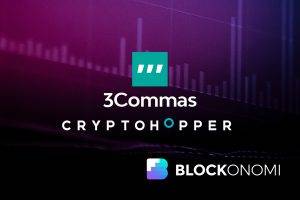Liquidity providers play a critical role in decentralized liquidity pools, providing the liquidity necessary for traders to buy and sell assets. In this article, we will explore the role of liquidity providers in a liquidity pool and how they earn rewards.
The Role of Liquidity Providers
Liquidity providers are individuals or entities that deposit assets into a liquidity pool, which are then used to facilitate trading on the platform. Liquidity providers earn rewards for providing liquidity, which incentivizes them to contribute to the pool.
The liquidity provided by liquidity providers is used to match buy and sell orders on the platform, which helps to maintain a stable price for the asset being traded. Without liquidity providers, the pool would not be able to function, and traders would not be able to buy and sell assets.
How Liquidity Providers Earn Rewards

Liquidity providers earn rewards through a combination of fees and incentives. Fees are charged to traders for using the pool, and a portion of these fees is distributed to liquidity providers as a reward for providing liquidity.
Incentives are also used to encourage liquidity providers to contribute to the pool. These incentives may take the form of governance tokens or other rewards, which can be used to vote on platform decisions or to earn additional rewards.
Liquidity providers may also earn rewards through liquidity mining, which involves staking their liquidity provider tokens (LPTs) to earn additional rewards. Liquidity mining can be a great way to increase earnings, but it is important to consider the risks and benefits of the strategy.
Risks and Considerations for Liquidity Providers
While liquidity providers can earn significant rewards by providing liquidity to a pool, it is important to consider the risks and potential downsides of the strategy. Liquidity providers are subject to impermanent loss, smart contract vulnerabilities, price volatility, and liquidity risks.
To mitigate these risks, liquidity providers should diversify their investments, choose a reputable platform, monitor the pool regularly, use risk management tools, and evaluate the potential rewards and incentives carefully.
Liquidity Provider Tokens
Liquidity provider tokens (LPTs) are tokens that represent the liquidity provided to a liquidity pool. LPTs can be traded or staked to earn additional rewards.
LPTs can be a useful way to earn additional rewards for providing liquidity, but it is important to consider the risks and potential downsides of the strategy. LPTs may be subject to price volatility and liquidity risks, which can impact the profitability of the investment.
Governance
Decentralized liquidity pools are often governed by a network of participants using blockchain technology. Governance can involve voting on platform decisions, such as fee structures, incentives, and other policies.
Participating in governance can be a way to have a say in the platform’s direction and to earn additional rewards, but it is important to consider the risks and potential downsides of the strategy. Governance tokens may be subject to price volatility and liquidity risks, and participating in governance may require a significant time commitment.
Gas Fees
Gas fees are fees paid to the Ethereum network for processing transactions on decentralized liquidity pools. Gas fees can vary significantly based on market conditions, and can impact the profitability of providing liquidity.
It is important to consider the gas fees associated with participating in a liquidity pool and to factor these fees into your overall investment strategy. Using risk management tools, such as limit orders, can help to reduce the impact of gas fees on your profitability.
Market Manipulation
Market manipulation is a significant risk in financial markets, including decentralized liquidity pools. Market manipulation can take many forms, such as pump-and-dump schemes, wash trading, and spoofing.
It is important to choose a reputable platform and to monitor the market for any potential signs of market manipulation. Using risk management tools, such as stop loss orders, can also help to reduce the impact of market manipulation on your profitability.
Impermanent Loss
Impermanent loss is a risk associated with providing liquidity to a liquidity pool. Impermanent loss occurs when the price of the asset being traded changes significantly while it is held in the liquidity pool.
When the price of the asset changes, liquidity providers may receive fewer tokens than they would have received if they had simply held the asset. Impermanent loss can impact the profitability of providing liquidity and is an important consideration for traders.
Risk Management Strategies
Risk management strategies are important for traders participating in a liquidity pool. Risk management strategies can include diversification, using stop loss orders, setting appropriate price limits, and monitoring market conditions.
By using risk management strategies, traders can minimize their risk exposure and maximize their profitability in the liquidity pool.
Regulation
Regulation is a significant consideration for traders participating in a liquidity pool. Regulatory frameworks can impact the accessibility, profitability, and stability of the platform.
It is important to consider the regulatory framework of the platform and to comply with all applicable laws and regulations. It is also important to monitor any changes in the regulatory framework that may impact the profitability of the investment.
Market Trends
Market trends are an important consideration for traders participating in a liquidity pool. Market trends can impact the profitability of the investment, and it is important to stay up-to-date with the latest market news and trends.
By monitoring market trends, traders can make more informed decisions and adjust their investment strategy to maximize their returns.
Liquidity Pool Fees
Liquidity pool fees are an important consideration for traders participating in a liquidity pool. Liquidity pool fees are charged to traders for using the pool, and a portion of these fees is distributed to liquidity providers as a reward for providing liquidity.
It is important to consider the fees associated with participating in a liquidity pool and to factor these fees into your overall investment strategy. Higher fees may result in lower profitability, while lower fees may result in higher profitability.
Slippage
Slippage is a significant consideration for traders participating in a liquidity pool. Slippage occurs when the price of the asset being traded changes significantly between the time the order is placed and the time it is executed.
Slippage can impact the profitability of the investment and may result in unexpected losses. It is important to consider the slippage associated with participating in a liquidity pool and to use risk management tools, such as limit orders, to reduce the impact of slippage on your profitability.
Liquidity Provider Strategies
There are a range of liquidity provider strategies that traders can use to maximize their returns in a liquidity pool. These strategies may include providing liquidity to multiple pools, using different asset pairs, or using different risk management strategies.
By using liquidity provider strategies, traders can minimize their risk exposure and maximize their profitability in the liquidity pool.
Platform Features
Different liquidity pool platforms may offer different features, such as governance, liquidity mining, or trading tools. It is important to consider the platform features when choosing a liquidity pool and to evaluate whether they are worth the investment.
Using platform features can help to maximize your profitability in the liquidity pool, but it is important to consider the risks and potential downsides of the strategy.
User Experience
User experience is an important consideration for traders participating in a liquidity pool. The platform should be easy to use, with a clear user interface and intuitive design.
A good user experience can help to reduce the time and effort required to participate in the liquidity pool, which can help to maximize profitability and minimize risk exposure.
Platform Security
Platform security is a critical consideration for traders participating in a liquidity pool. The platform should have robust security measures in place, including encryption, two-factor authentication, and regular security audits.
A secure platform can help to reduce the risk of loss due to hacking or other security breaches, which can help to maximize profitability and minimize risk exposure.
Smart Contract Risk
Smart contract risk is a significant consideration for traders participating in a liquidity pool. Smart contracts can be subject to vulnerabilities or errors, which can result in the loss of funds or other negative consequences.
It is important to choose a reputable platform with a secure smart contract architecture and to monitor the smart contract for any potential vulnerabilities or errors.
Token Selection
Token selection is an important consideration for traders participating in a liquidity pool. Tokens should be chosen based on their liquidity, volatility, and overall market conditions.
By choosing the right tokens, traders can maximize their profitability and minimize their risk exposure in the liquidity pool.
Conclusion
Liquidity providers play a critical role in decentralized liquidity pools, providing the liquidity necessary for traders to buy and sell assets. Liquidity providers earn rewards through fees, incentives, and liquidity mining, but it is important to consider the risks and potential downsides of the strategy. By understanding the role of liquidity providers and the risks and considerations involved, traders can make more informed decisions and maximize their profitability in the world of financial markets.









